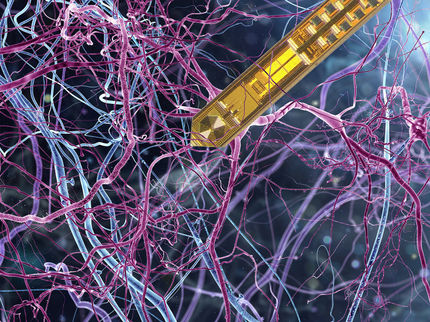Hip implant patients with unexplained pain likely to have tissue damage
The cause of unexplained pain among metal-on-metal hip implant patients is more likely to be tissue damage than wear of the implant, Hospital for Special Surgery researchers have found. The study, performed by Dr. Danyal Nawabi, orthopedic surgery fellow, and research collaborators at HSS.
Researchers set out to determine causes of unexplained pain among patients with metal-on-metal hip implants (in which the ball and socket are both made of metal) who came to the hospital for revision surgery. Metal-on-metal implants have potential advantages, said Timothy Wright, Ph.D., Kirby Chair of Orthopedic Biomechanics at Hospital for Special Surgery (HSS): "If they remain well lubricated, as happens with the oil in your car, it minimizes wear." In addition, surgeons can implant a bigger head, or ball, making the hip joint more stable. But nationwide, failure of metal-on-metal hip devices due to unexplained pain is rising.
The research group, which did not have any ties to hip implant manufacturers, was led by Dr. Douglas Padgett, chief of the Adult Reconstruction and Joint Replacement Division and chief of the Hip Service at HSS, and Dr. Hollis Potter, chief of the Division of Magnetic Resonance imaging (MRI). They compared 50 patients (33 with total hip arthroplasties and 17 with hip resurfacing arthroplasties) who came to HSS for revision surgery because of unexplained pain, to a control group of 48 patients (23 with total hip arthroplasties and 25 with hip resurfacing arthroplasties) who came to HSS for revision surgery because of loosening, malalignment, infection or fracture. The investigators combined results from clinical examinations of the patients, magnetic resonance imaging, wear analysis studies on the removed implants, and pathology studies of tissues removed at surgery, including the degree of aseptic lymphocytic vasculitis-associated lesions (ALVAL), a sign of adverse tissue reactions to metal debris.
Thirty patients with unexplained pain (60% of the group) had an ALVAL score of at least 5 on a 10-point scale, indicating moderate to high adverse tissue reactions. Twelve percent of patients had some buildup of metal deposits in their soft tissue. The average synovial thickness was three times higher in the unexplained pain group compared to the control group, and the average synovial fluid volume was five times higher in the unexplained pain group compared to the control group. Ten times as many patients in the unexplained pain group had high-grade tissue damage scores compared to the control group.
Researchers found no differences between the unexplained pain group and the control group in terms of age, sex, body mass index, length of implantation, or size or positioning of the implants. Implants in both groups showed similar signs of wear.
"We found that some patients had a significant amount of tissue damage but not a lot of wear," Dr. Wright said, "suggesting that factors other than wear are contributing to the problem regardless of whether the patients have pain. We have used the information from our study to develop guidelines for patients and surgeons."
"Hip implant patients with unexplained pain should be followed closely by their surgeon," added Dr. Padgett. "Early identification of patients with unexplained pain is vital to avoid significant tissue damage. The work by Dr. Potter using novel MRI protocols has proven to be invaluable in diagnosing and monitoring these patients."
HSS doctors perform more than 9,000 joint replacement surgeries per year, of which about 10 percent are revision surgeries. Many patients who have had their joint replacement surgeries elsewhere come to HSS for revision surgery.
Most read news
Other news from the department science

Get the life science industry in your inbox
By submitting this form you agree that LUMITOS AG will send you the newsletter(s) selected above by email. Your data will not be passed on to third parties. Your data will be stored and processed in accordance with our data protection regulations. LUMITOS may contact you by email for the purpose of advertising or market and opinion surveys. You can revoke your consent at any time without giving reasons to LUMITOS AG, Ernst-Augustin-Str. 2, 12489 Berlin, Germany or by e-mail at revoke@lumitos.com with effect for the future. In addition, each email contains a link to unsubscribe from the corresponding newsletter.
Most read news
More news from our other portals
Last viewed contents

Surprising finding: Mothers massively change their intestines during pregnancy and nursing - Scientists discover the molecular and structural principles of intestinal changes in pregnancy, critical for nutrient uptake and the health of babies

Halozyme withdraws proposal to acquire Evotec - Unwillingness to engage in discussion

Restriction of hazardous substances in tattoo inks

Luminous bacterial proteins detect chemicals in water

Start-up dedicated to developing new antibiotics - Smartbax nominated for Falling Walls award
Nigella_sativa
The Brain’s Gardeners: Immune cells ‘Prune’ connections between neurons
Trigeminal_nerve

Molecular mechanism of a rare disease causing severe immunodeficiencies deciphered - It is WHIM syndrome, a disease caused by mutations in a cell membrane receptor.






















































